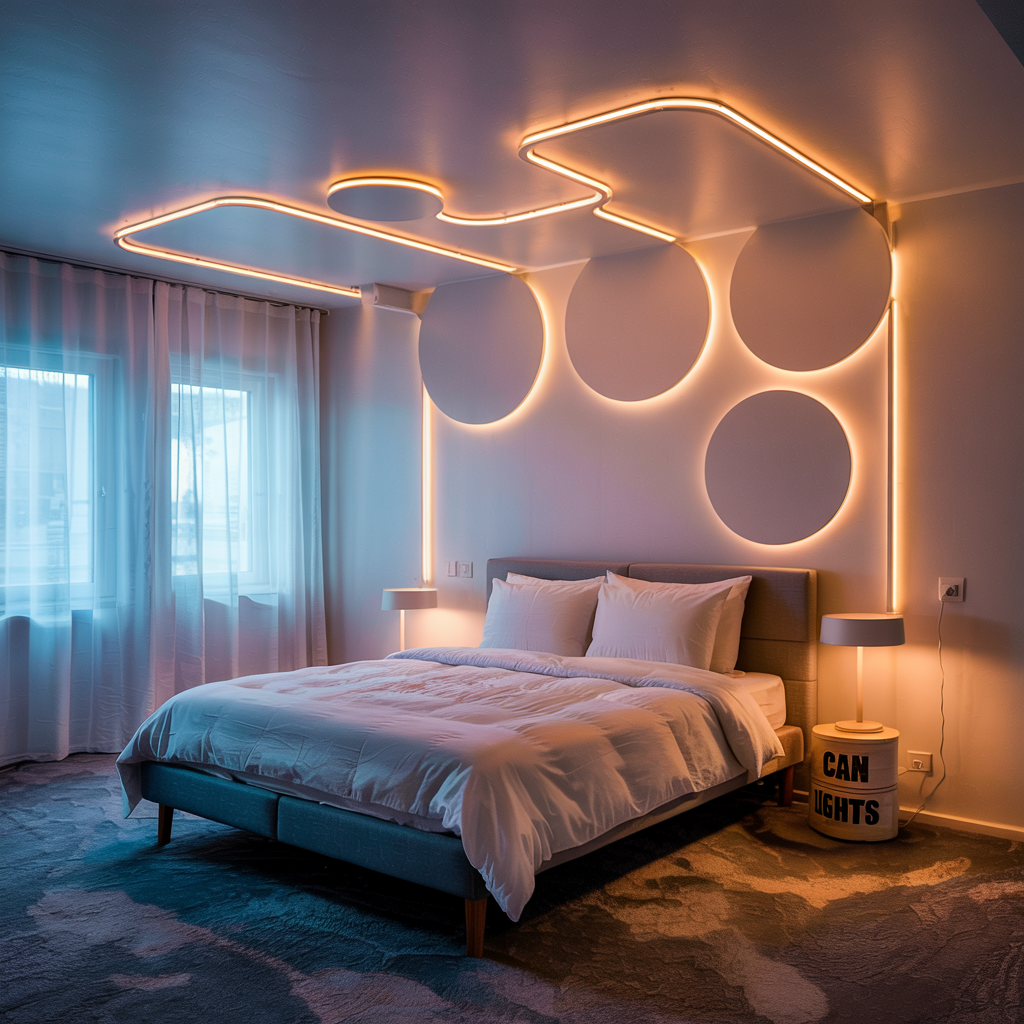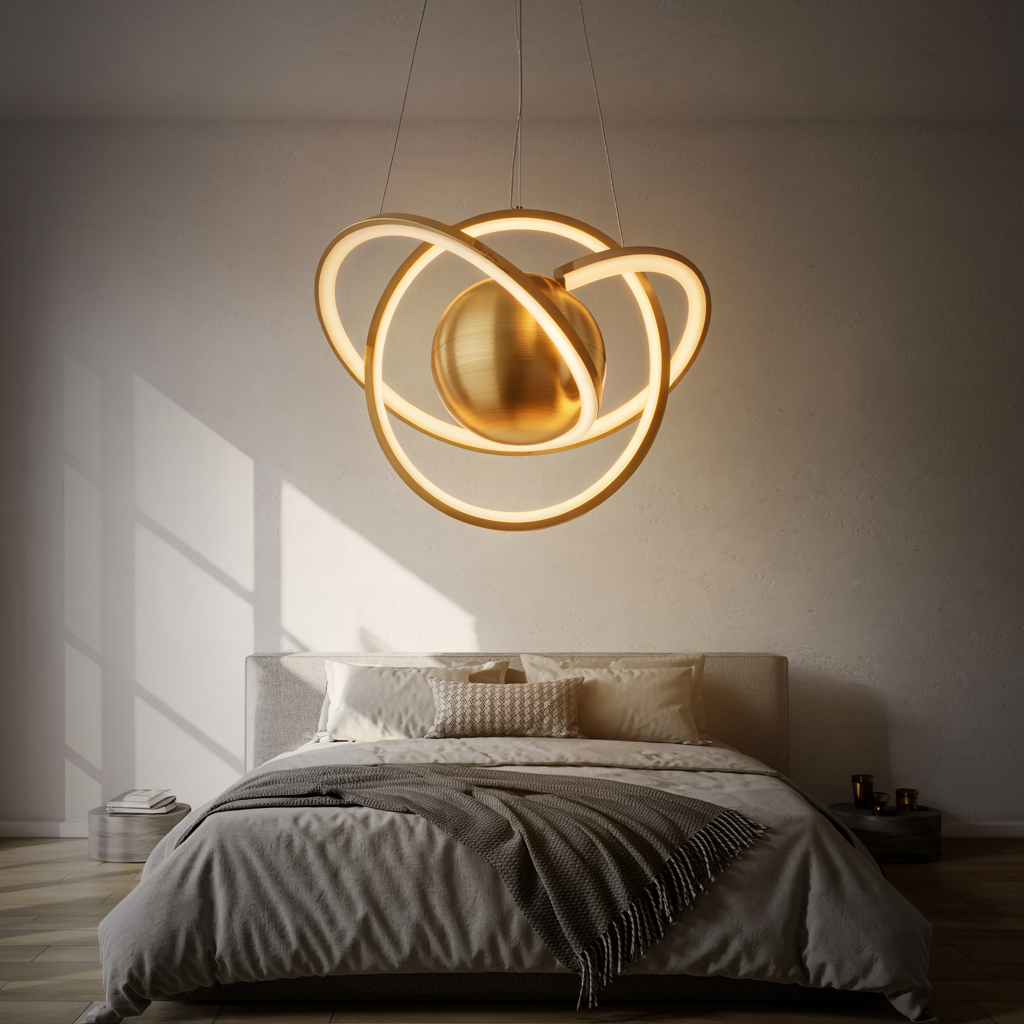Lighting A 20×20 Room: How Many Can Lights Do You Need?
How Many Can Lights Do You Need? You typically need one can light for every 4 to 6 square feet of ceiling space. To determine the exact number, divide your pergola’s total square footage by 4 or 5. For example, a 100-square-foot pergola would require about 20 to 25 can lights for even illumination. The…
How Many Can Lights Do You Need? You typically need one can light for every 4 to 6 square feet of ceiling space. To determine the exact number, divide your pergola’s total square footage by 4 or 5. For example, a 100-square-foot pergola would require about 20 to 25 can lights for even illumination.
The brightness of a light is measured in lumens. A higher lumen rating means a brighter light. Illuminance, measured in lux, represents the amount of light falling on a surface. For a 20×20 room (400 square feet), you need to consider the required lux levels based on.
How Many Can Lights Do You Need? In Detail Answer

Color Temperature
Color temperature is measured in Kelvin (K). Lower Kelvin values (2700K-3000K) produce warmer, yellowish light, ideal for living rooms and bedrooms. Higher Kelvin values (5000K-6500K) produce cooler, bluish light, better suited for kitchens, bathrooms, and offices. The choice depends on the mood and purpose of the room.
Can Light Types
Recessed lighting, commonly known as can lights, are a popular choice for their clean aesthetic and efficient use of space. They come in various sizes (diameter) and finishes (e.g., white, brushed nickel). Different styles can be chosen, including options with adjustable heads for directional lighting.
Calculating the Number of Can Lights
Room Size and Usage
A 20×20 room is a substantial area. The number of can lights needed directly correlates with the room’s size and its intended use. A formal dining room will likely require more intense and strategically placed lighting than a casual living area.
Light Placement Strategy
Proper light placement is crucial. Avoid concentrating lights in a single area, causing uneven illumination. A common strategy is to create a grid pattern across the ceiling, ensuring even coverage. The distance between lights should be planned to avoid shadows.
Lumens per Square Foot
A general guideline is to aim for 1.5 to 2 lumens per square foot for general ambient lighting in a living space. For task-oriented areas like a kitchen island, you would need higher lumens per square foot (around 3-5 lumens). For a 400 sq ft room, this translates to 600-800 lumens for the minimum illumination.
Factors Affecting Can Light Selection

Ceiling Height
High ceilings require more lights to achieve uniform illumination. The higher the ceiling, the more distance the light has to travel, so you may need to use a greater number of fixtures or increase the wattage per fixture.
Room Color and Decor
Darker room colors absorb more light, meaning you need brighter lights or more fixtures to achieve the desired brightness. Light-colored walls and ceilings reflect light, making the room appear brighter with fewer lights. The décor style (modern, traditional, rustic) will also influence your choice of can lights.
Energy Efficiency
LED can lights are significantly more energy-efficient than incandescent or halogen alternatives. This makes LED the most popular choice for residential lighting. This results in lower energy bills over the long term.
Choosing the Right Can Lights

LED vs. Incandescent/Halogen
LED can lights are the preferred choice due to their energy efficiency, long lifespan, and lower heat output. Incandescent and halogen lights are less efficient and generate more heat.
Dimmability
Dimmable can lights allow you to adjust the brightness according to the time of day or mood. Consider this feature for more versatility in lighting.
Fixture Size and Style
The diameter of the can lights should be proportionate to the room size. Larger fixtures are more suitable for expansive areas. The style of the fixture should complement the room’s overall design aesthetic.
Installation Considerations
Electrical Wiring and Safety
Always consult a qualified electrician for any electrical work. Incorrect wiring can pose serious safety risks. Planning your lighting layout ahead of time will minimize disruptions during installation.
Placement and Spacing
Careful planning of the location and spacing of the can lights is crucial. Consider creating a grid or other pattern for even coverage. Use lighting design software to visualize the results.
Trim Options
Can lights are available with various trim styles, from simple to ornate. Choose a trim that complements the ceiling and overall design of the room.
Types of Can Lights for a 20×20 Room
Recessed Lighting
This is the most common type of can light, offering a clean and unobtrusive look. They are available in various sizes and finishes.
Track Lighting
Though not strictly can lights, track lighting can be integrated into a 20×20 room for task or accent lighting. They offer flexibility in adjusting light direction and intensity.
Accent Lighting
Accent lighting enhances specific architectural features or artwork. In a 20×20 room, this might involve directional can lights highlighting a fireplace or a piece of art.
Comparing Lighting Schemes for a 20×20 Room
All Recessed Lights
A fully recessed lighting scheme provides uniform illumination, which is ideal for many living spaces. The number of lights will depend on the lumen output per light and desired brightness.
Combined Recessed and Track Lighting
This combination offers flexibility, with recessed lights providing ambient lighting and track lighting serving as adjustable task or accent lighting.
Layered Lighting Approach
This involves multiple layers of lighting: ambient (recessed), task (desk lamp), and accent (artwork lighting). This creates a versatile and well-lit space.
Budgeting for Your Lighting Project
Cost of Can Lights
The cost of can lights can vary depending on features such as wattage, brand, dimming capabilities, and finish. LED lights have a higher initial cost but are significantly cheaper to operate in the long run.
Installation Costs
Installation costs will vary based on the complexity of the project and the electrician’s hourly rate. It’s wise to obtain multiple quotes before commencing work.
Additional Expenses
Consider the cost of other materials such as wiring, junction boxes, and trim kits. These can add to the overall project cost.
Troubleshooting Lighting Issues
Uneven Illumination
Uneven illumination often results from poor light placement. Rearranging lights or adding more can address this issue.
Flickering Lights
Flickering lights usually indicate a problem with wiring or a faulty fixture. Consult a qualified electrician to diagnose the problem.
Dim Lighting
Dim lighting might be due to insufficient lighting or low lumen output of the bulbs. Replacing lights with higher lumen output bulbs often resolves the issue.
Maximizing Energy Efficiency
Choosing Energy-Efficient Bulbs
LEDs are the most energy-efficient choice. They offer significantly better energy savings than incandescent or halogen bulbs.
Using Smart Bulbs
Smart bulbs can be controlled remotely through an app, allowing for automated scheduling and customized brightness levels. This boosts energy efficiency and convenience.
Motion Sensors
Motion sensors can automatically turn lights on when motion is detected, ensuring lights are only on when needed, reducing energy consumption.
Frequently Asked Questions
What is the average cost of installing can lights in a 20×20 room?
The cost varies significantly depending on factors like the number of lights, materials used, electrician’s hourly rate, and complexity of installation. You should obtain multiple quotes to get a realistic cost estimate.
How many lumens are needed per square foot for a 20×20 room?
A general recommendation is 1.5-2 lumens per square foot for ambient lighting, but task lighting areas might require significantly higher values (3-5 lumens per square foot).
What type of can light is best for a 20×20 living room?
LED recessed lighting is a popular and versatile choice for living rooms. Their energy efficiency and long lifespan make them an attractive option. Consider dimming capabilities for flexibility.
Can I install can lights myself?
While possible for individuals with electrical experience, it is generally recommended to hire a qualified electrician for can light installation to ensure safety and compliance with electrical codes.
How far apart should can lights be spaced?
The ideal spacing depends on the light’s lumen output and ceiling height. Generally, a spacing of 4-6 feet is recommended for even illumination. It is best to consult a lighting design plan or lighting designer for personalized advice.
What are some energy-saving tips for can lights?
Using energy-efficient LED bulbs, employing smart bulbs with automated scheduling, and utilizing motion sensors are all effective ways to minimize energy consumption.
How do I choose the right color temperature for my can lights?
Warmer color temperatures (2700K-3000K) are suitable for creating a relaxing ambiance in living rooms and bedrooms. Cooler color temperatures (5000K-6500K) are better suited for kitchens, bathrooms, and offices.
Final Thoughts
Determining the right number of can lights for your 20×20 room involves careful consideration of various factors, including room size, usage, desired ambiance, and budget. Understanding lumens, color temperature, and light placement strategies is crucial for achieving optimal illumination. Remember to prioritize energy efficiency by choosing LED lights and employing energy-saving techniques. While this guide offers a comprehensive overview, consulting with a lighting professional can provide customized recommendations to suit your specific needs and aesthetic preferences. By following these guidelines, you can transform your 20×20 room into a well-lit, comfortable, and inviting space. Now, go ahead and plan your perfect lighting scheme!

